by Prof Ujjwal K Chowdhury
There are two sides of the debate: apologists of non-coalition single large party led government with a super powerful leader at the helms, and the apologists of multi-party governance by consensus and compromises. Let us look at both the sides before drawing a conclusion.
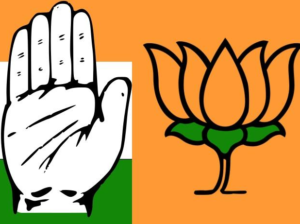
Votaries of Strong Government with Powerful Leadership:
The apologists of a government with a strong leader hinges on the premise that you need a decisive leadership to shepherd India to a presumably 20 trillion dollar economy by 2047, which will have huge returns from Indian manpower, IT industry, satellite telecom, defence production, and services. It believes that the creativity of India, the scientific knowledge of India, and the ancient traditions of India are what the world needs. And when the world looks at us, we should not look like some ragtag army of dwarf leaders in a vested coalition, we should look like a stable country with the stable leadership and serious agenda to make India grow. We can’t see regionalism, parochialism and personal agendas dominate a national agenda. There cannot be a situation where the incumbent government can fall any moment, or when bombs go off in the marketplaces, when we have terrorists attacking us. When the only response was: we will use all diplomatic means necessary in our command.
The votaries of non-coalition strong government also believe that there have been 8 crore fraudulent beneficiaries of Indian governance and state power who be weeded out not necessarily only by technology but also by an exercise of political will. There is also being one class which has been rendered unemployed particularly in Lutyens Delhi. That’s the class called the middlemen and brokers.
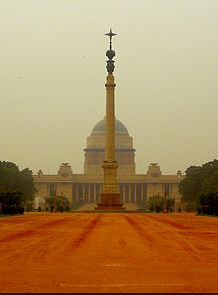
There are certain countries where because of the vagaries of the electoral system, you always have coalitions . Germany is one, Israel is another. You cannot probably envisage a situation where you don’t have coalitions. But there are coalitions and coalitions. We also have a certain situation where in the past we have members the two or three member parties who can put a veto on an entire system. In India, like in any other democracy lobbies exist. But when that lobby exercises the power of veto, which is what coalitions end up doing, the growth story takes a back seat. That difficult choices cannot, under the given the Coalition culture in India, be exercised with diverse and contradictory forces in governance together.
Coalition of dependence is what you have to avoid. What is happening in MP today is that you have Congress with 114 seats along with one seat of SP and one seat of BSP. That is the worst kind of coalition because you are depending on two individuals for your government to stay in power. So, for the future of India, it depends on the fact that we do not ever have coalition of dependence. If you have different ideologies together and if you think you are forming a coalition, it is not going to work. It is not a question of moving in one direction.
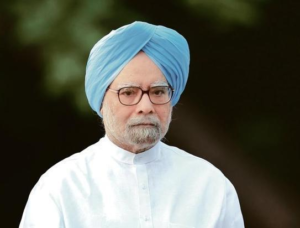
Former Prime Minister Manmohan Singh could not have been more candid describing his own predicament when he admitted that he had to make some compromises on the reintroduction of DMK’s A Raja into the cabinet in 2009 as Telecom Minister despite complaints against him.
Let’s look at the life-spans of coalition governments -the Charan Singh phenomenon could not face the Parliament and went out in 6 months; the next coalition of VP Singh lasted a mere 11 months; Chandra Shekhar’s was even more short-lived – four months before he lost his majority. HD Deve Gowda’s I K Gujral’s were short-lived governments as well. Atal Bihari Vajpayee talked about the coalition dharma, of course, the mature prime minister after him, Manmohan Singh talked about compulsions of coalition. But Kumaraswami’s contribution to the lexicon of Indian politics in Karnataka is coalition depression. In 2008, weeks after he was inducted as the CM, he burst into impetuous tears, talking of the pains of coalition.
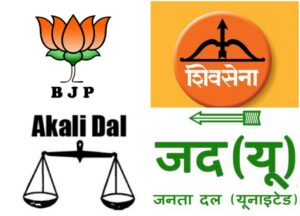
Hence, those who are against coalitions anyhow believe in politics of ideological proximity as is what they believe there is among BJP, Akali Dal, Shiv Sena and JDU and all in the union cabinet. They believe that India’s growth story needs a leader like Narendra Modi whose leadership stands in stark contrast to three preceding decades when India was managed on one hand by the Prime Minister who was remote controlled constitutionally and coterie of unaccountable advisors.
Votaries of Governments with Coalition through Consensus:
I think one of the great lessons which we can learn from our past is that things are never black and white. There are always many other shades in between. If you are talking about parties combining together, committing themselves to a common programme, working unitedly, then coalitions in a diverse country as India is for the good of the nation.
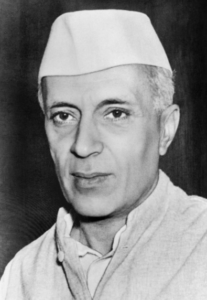
Pandit Jawahar Lal Nehru in 1961, some of his old friend and an American who was working for the media, he said to Pandit ji ‘after working in media for 35 years now I realize that there are not only two sides to a story, but we are many shades in between’ and the prompt response of Panditji was ‘welcome to Hindu view of life’. Even Guru Golwalkarji said India has always had infinite variety. For Unity, we need harmony not uniformity. Nature too abhors excessive uniformity. So the point is that India has this Genius of creating Harmony out of diversity unity in diversity. We should not be afraid of getting into coalitions. We should not deride the coalition.
Frankly both coalitions and strong single-party governments can fail and the question is political culture of the country and the needs of the country which can decide this. Interestingly Italy is the perfect example of what is wrong with the coalition government because the average life of Italian government is one year, over the last 50 plus years, and it’s always a coalition govt there.
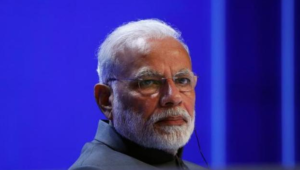
There are damages that on party dominant government can do in our country. Two good examples are: Emergency by Indira Government and Demonetization by Modi Government. The Raj Dharma, Vidur says, is that ‘the only imperative for a ruler is to help the people’ and the kind of pain that emergency and demonetization had brought to our country, despite all the touted benefits, they were wrong. The license permit, the inspector raj, which was created by the strong single-party government which was coined by Rajaji, was another such challenge to good governance.
The point here is that neither coalition government nor single-party government can insure you the delivery of tasks, both can make mistakes.
Now the liberal democratic state has three pillars, One – it should have an effective executive that can act quickly and get things done. Two – action should be under the rule of law and that action can be accountable for people. Lastly – what we lack today is state capacity, the ability to take firm decisions. That’s why the biggest problem of this country is not really economic reforms, it is governance reforms.
One, why should it take 15 years to get justice in the courts? Why should the bureaucrat who often works one hour a day be rewarded and promoted as a bureaucrat with the same bureaucrat who works for 12 hours a day and is hugely effective? Why should the ordinary citizen be afraid of going to police station? Why should the police be the hand-maiden of the chief minister? Why should we have elections every month? So these are the governance issues of the country and neither the the single-party government nor coalition per se can make it better, unless we change the system and its culture.
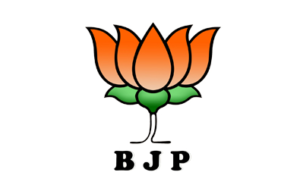
India is not a bipolar country. Look at the 2014 election results, the BJP gets 31 percent of the votes the Congress gets around 20 percent, together we get 50 percent of the people voting for the two biggest national parties together. And there are 282 seats for BJP and 44 for the Congress, the two biggest parties. They have only 50 percent of India’s popular vote but control 326 out of 543 seats. So we actually expose our ignorance of the very country, we live in, when we say that majority rules. Around 51% of the people, even in 1984 when the Congress got 404 seats, did not vote for it. So, khichdi, with a bit of ghee and papad, is our favoured cuisine, on the plate and in governance.
Ten years of UPA give you a growth rate of 8.35% over the entire period and that period included the world’s worst recession of the 1931. Oil prices touching at $140 a barrel and the coalition given to you. The growth during Modi led NDA government is 7.3%. Oil prices touching $29 dollars a barrel and yet it did not happen. What did they give you – demonetization, anger, a flawed GST, inequality, 1% of India owns 60% of its wealth and above all they give you hate and violence. Before we live in an economy, we live in a society. Further, the distressed UPA coalition passed the Lokpal Bill, but a powerful NDA government never put it into practice till the very last quarter of its tenure. Another fact: during the time of UPA1, the stock market growth was of 74%, the Sensex. UPA2 gave a stock market growth of 131%, the NDA has given 62% so far. It’s not about the formation, it’s the intent.
We have a single largest party with a majority, under the leadership of Narendra Modi, with highest unemployment rise in 45 years by figures of NSSO the government body. When we talk about external debts, we were at Rs 37.44 lakh crore in 2014 (already very bad) and it is Rs 43.72 lakh crore today. The farm growth story has also come to a standstill. From a 3.8% growth that we were tracking in 2014 to 1.9% growth trajectory that we are seeing today. Against the promise of 2 crores jobs a year, it is 8.08 lacs per year today.
This is the age of science & technology. It is good to be informed based on evidence-based facts and also data. If you go to a forest and plant expert will tell you that mono culture is dying. A sociologist will tell you larger society is not just successful but happier. Economist will tell you that many of the broad economic parameters are subject to ups and downs, and it went good when coalition politics was on, even if you don’t look at the GDP.
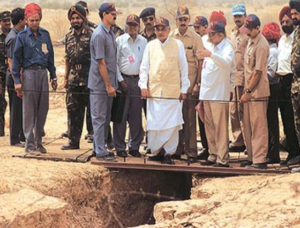
Poverty reduction or health patterns like maternal mortality have got down, in the coalition years that we have had. The Right to Information, the MNREGA for rural employment the NRHM for rural health were all legacies when ‘weak’ Congress coalitions ruled the nation, including the Pokharan blasts under Vajpayee led coalition. Let’s not forget the nuclear deal that India got for itself was also because of the intent of a coalition government.
The most diverse societies are the most creative ones. It is diversity input that helps creativity. For example Silicon Valley that is a perfect example of diverse society people starting from south of America to northern parts, Japanese, Koreans, Indians and Chinese. It’s not only technology but also the creativity that flourishes there.
Governance should also act with same kind of ethics. If we see a rose garden it makes us find different kind of roses even in the bouquet it makes sense. The same is with the rainbow. Then we talk about government and politics, it’s not true that coalition government were not strong. It is not true as well that they ended in short durations. You have Narasimha’s minority government running full five years, even Vajpayee spent full five years as NDA PM.
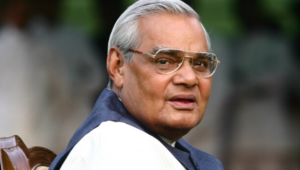
Historically speaking, even in the pre-independence days during 1946, there was an interim government which had leaders from the Muslim League, Congress and Akali Dal. It’s not a concept that came into existence the post-emergency. But the first coalition government at the national level, in post-independence India, was the 1977 government of course. After that we had various coalition governments and from 1989 to 2009, there were 7 consecutive Lok Sabha elections and in all the 7 elections there wasn’t a single political party that got a mandate and they all were coalition governments. Coalitions are here to stay, hence. But speaking from an economic perspective, India had one of the best periods as far economic growth is concerned from 1991 to 2014. During these years we had various global letdowns, and we had a small war with Pakistan, even then the Indian economy performed well including double digit GDP growth; and now when we have a full majority government, post-2014, the economy hasn’t performed that well, despite the global economy performing better.
Therefore, it’s about the leadership and not about the formation of the government. Also, in the Westminster System when you have a single party, when you have voting under a whip and when you have a strong Prime Minister, it often turns into a constitutional dictatorship.
The author is a media academic and columnist, currently Media Dean of Pearl Academy, Delhi and Mumbai campuses.
(The views and opinions expressed in this article are of the author and thus do not necessarily reflect the editorial policy or position of OdishaPlus.)




























